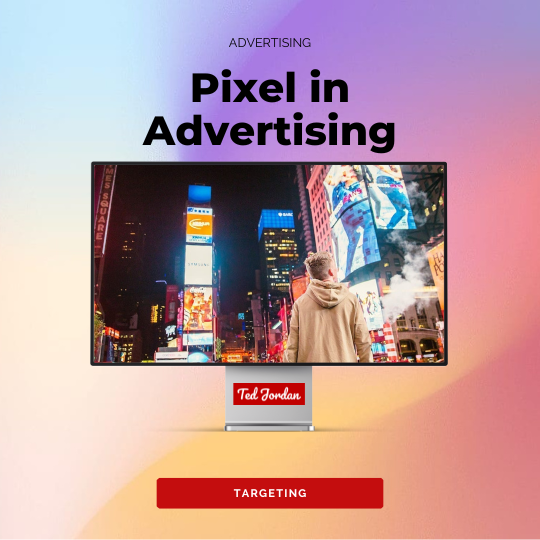With a cookieless world ahead, contextual advertising is becoming more and more popular in the US and around the world. What is Programmatic contextual targeting? How does it work? Why use contextual targeting in your ad campaigns?
Today, we define contextual targeting so you’ll understand why this type of targeting is used by advertisers. Of course, you’ll be able to see some examples of contextually targeted ads to get a better picture.
Are you ready to dive into the world of contextual advertising?

Contextual targeting explained
Contextual targeting, or contextual advertising, is a form of personalised advertising based on categorised content. The aim of contextual advertising is to display ads that are the most relevant to a website’s content. Contextual advertising does not use the user’s data; instead it uses website’s content, which is analysed thanks to crawlers and machine learning.
Websites content is analysed through web crawlers. They scan every single URL of a website, then categorise its content.
Think about an ad for coffee beans displayed next to an article named “The best cappuccinos in New York”, for example. The website’s content is related to coffee so an ad with similar content is displayed.
It’s similar to in print magazines: you’ll see ads for cars in a magazine about SUVs. This is contextual advertising.
One of the most popular contextual targeting platforms is Google Ads: Search ads are shown to users using contextual targeting or, more precisely, contextual keyword targeting.
Programmatic contextual targeting can be used with videos, audio ads, native and display ads.
In contextual advertising, ad selection is based on categorised content. To categorise web content, 3 main factors are taken into account: category (or industry), keyword targeting and semantic.
Category targeting
Websites and publishers are labelled and split per category or industry: lifestyle, automotive, news, beauty, sports, etc. Category targeting is quite broad so it’s not the most efficient contextual targeting.
Contextual keyword targeting
Contextual keyword targeting is used to match specific keywords, entered by a user, with related ads. For example, if a user searches for “sunscreen” on a website, they will find some content about this topic and will probably see an ad selling sunscreen, sun hats or bathing suits.
Contextual keyword targeting offers great accuracy to advertisers.
Semantic targeting
Semantic targeting uses AI and machine learning to understand the meaning of webpages, their content (text and images). That’s why it’s important to have optimised webpages: content and webpages’ structure must be clear for web crawlers to understand what they are about.
Of course, it’s possible to combine these 3 important targeting options in contextual advertising.
Contextual targeting signals
We could not talk about Programmatic contextual targeting without mentioning contextual targeting signals.
Contextual targeting signals are cookieless signals used by advertisers to display ads when context or environment is best. They are considered as the foundations of contextual advertising.
Weather, air quality, localisation, seasons, time of the day, day of the week, power outage, outdoor temperature, etc. are used as conditions to launch or not Programmatic advertising campaigns.
Imagine, it’s spring, you are walking in the city. The temperature is extremely exceptionally low today, you are quite cold. On the main street, you notice a DOOH screen advertising a light-weight jacket for chilly days. Perfect timing, don’t you think?
The Programmatic ad has probably been displayed because it uses some contextual targeting signals: outdoor temperature and localisation.
Contextual targeting in Programmatic advertising: ads
Now that you know what Programmaitc contextual targeting is, check these examples to be sure you understand how it works.

This example highlights contextual keyword targeting. The user entered the keyword “sun protection” on Amazon and an ad about sunscreen appears.

Here, an ad related to Online Courses is appearing on top of the Forbes article “6 Free Online Excel Courses With Certificates” thanks to contextual advertising. The ad mentions “e-courses”, which is related to the content.
[If you are looking for a Certifying Excel Course, check this one out. It’s on sale for a limited period of time and is available on all devices.]

On the left, you have an example of ad using contextual targeting signals: localisation and weather.

Now, here is an example of keyword targeting on YouTube. The user searched for “holidays”, probably to listen to a song. This triggered a contextual ad to display: an ad for Airbnb to book a place to stay.
Contextual targeting vs behavioural targeting
In Programmatic, contextual targeting and behavioural targeting are sometimes mixed up. These types of targeting are different, but can be combined for a greater efficiency and a higher chance of conversions.
Behavioural targeting is based on actions previously taken by a user. Tracking is involved with the help of 3rd party pixels and cookies and first-party data. Privacy concerns about behavioural targeting are growing. Indeed, users are usually unhappy their data is shared across platforms or sold to publishers.
Behavioural targeting can be problematic because of GDPR or CCPA. Additionally, know that behavioural targeting is more restricted on iOS devices such as iPhones.
On the other end, contextual targeting is not as problematic regarding privacy because users’ data is not used. This Programmatic targeting option allows advertisers to reach a broader audience.
Timing is key in advertising: behavioural targeting may display ads when it’s too late (the user already purchased a similar product). With contextual advertising, ads are displayed when the user is consuming content related to the displayed ad. Chances of clicks and conversions are then higher.

Why use contextual advertising?
Contextual advertising helps advertisers deliver their ads in a cost-effective and simple way. Ads are seen by users who are interested in related contents and who are most likely to convert. Also, users seeing ads thanks to contextual targeting are usually more receptive because advertisement seems less intrusive to them in that moment.
Contextual targeting is also really easy to set up because there is no data to upload on DSPs or on other Programmatic platforms.
But this type of targeting is not always efficient. For example, if a user reads a blog post about the biggest villas in the South of France, this user is probably just curious. Chances this user wants to buy a villa in the South of France or travel to France are slim. Another example where targeting could go wrong: think about a news article about a murder involving a kitchen knife as the weapon. That would be really bad publicity for an advertiser selling knives to appear next to this article.
Thankfully, exclusion lists are being used to avoid these situations.
To conclude, now that language and location targeting may restrict your ads to display on some webpages. But this is also the case when using Programmatic behavioural targeting.
Now, you know what Programmatic contextual targeting is and why it’s used by so many advertisers. Remember that we are moving to a cookieless world, so learn how to use contextual targeting now!
Get started with Programmatic contextual advertising: hire a Programmatic Expert like Ted Jordan to take care of your campaigns, or join our Programmatic Online Course to learn how to use contextual targeting on your own.




